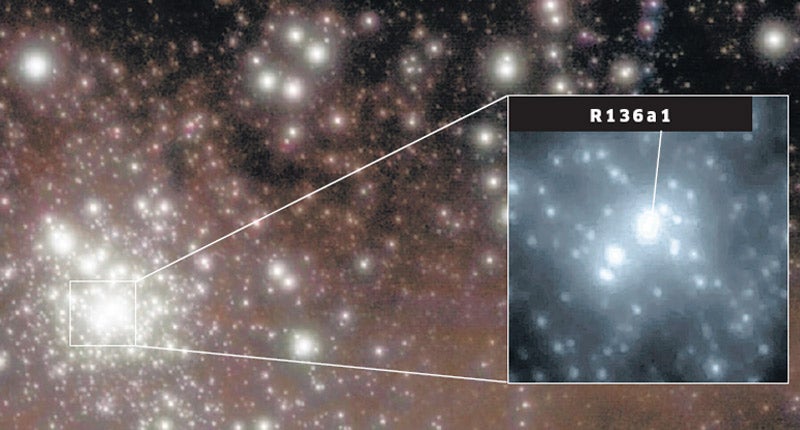The star that's ten million times brighter than the Sun

Your support helps us to tell the story
From reproductive rights to climate change to Big Tech, The Independent is on the ground when the story is developing. Whether it's investigating the financials of Elon Musk's pro-Trump PAC or producing our latest documentary, 'The A Word', which shines a light on the American women fighting for reproductive rights, we know how important it is to parse out the facts from the messaging.
At such a critical moment in US history, we need reporters on the ground. Your donation allows us to keep sending journalists to speak to both sides of the story.
The Independent is trusted by Americans across the entire political spectrum. And unlike many other quality news outlets, we choose not to lock Americans out of our reporting and analysis with paywalls. We believe quality journalism should be available to everyone, paid for by those who can afford it.
Your support makes all the difference.The heaviest and brightest star known to exist – with a mass some 300 times as big as our own Sun – has been discovered by British astronomers who said yesterday that its existence defies current views on the maximum size of stellar objects.
The researchers found the star, known as R136a1, in a region of a neighbouring galaxy that is known to be a "cosmic factory". It exists inside the Tarantula Nebula of the Large Magellanic Cloud, more than 165,000 light years away from Earth, in an area where stars are being born from extensive clouds of gas and dust
It is the biggest of a number of extremely rare "super heavyweight" stars that form in clusters so dense and bright that until now it has been impossible to distinguish between many of the individual objects. R136a1 is so bright that it would outshine the Sun by as much as the Sun outshines the Moon – a luminosity close to 10 million times greater than our own star.
"This is probably the most luminous star as well as the most massive star ever found. There are bigger stars in terms of physical size, it's just that this is the heaviest. It weighs about 300 million times more than the Earth," said Professor Paul Crowther, of Sheffield University, who led the study published in the journal Monthly Notices of the Royal Astronomical Society.
"These stars are born heavy and lose weight as they age. Being a little over a million years old, the most extreme star R136a1 is already 'middle-aged' and has undergone an intense weight-loss programme, shedding a fifth of its initial mass over the time, or more than 50 solar masses," Professor Crowther said.
The star is so massive that its gravitational attraction would easily outweigh that of our own star. If it could be swapped for the Sun, R136a1 would dramatically speed up the rate at which the Earth made its annual orbit around its star, according to Raphael Hirschi of Keele University. "Its high mass would reduce the length of the Earth's year to three weeks, and it would bathe the Earth in incredibly intense ultraviolet radiation, rendering life on our planet impossible," Dr Hirschi said.
Using the European Southern Observatory's Very Large Telescope in Chile, Professor Crowther and his colleagues were able to distinguish between the super heavyweight stars in two different stellar clusters, known as R136, where the brightest and heaviest star is located, and NGC3603, which is about 22,000 light years from Earth.
Within the R136 cluster, the scientists estimate that only four stars weigh more than 150 times the mass of the Sun but even though there are about 100,000 stars within the cluster, these four heaviest objects account for nearly half of all the solar wind and radiation emitted from the cluster.
The new findings support the idea that there are lower size limits for stars. "The smallest stars [must be] more than 80 times the mass of Jupiter," said Olivier Schnurr, from the Astrophysics Institute in Potsdam, Germany. "Below that they are failed stars or brown dwarfs. Our new finding supports the previous view that there is also an upper limit to how big stars can get, but raises the limit by a factor of two, to about 300 solar masses."
In numbers
165,000 The distance in light years between R136a1 and the Earth
300 Number of Suns needed to equal the mass of the star. It is more than 300,000 times bigger than Earth
3 The length, in weeks, of a year on Earth if R136a1 was swapped with our own Sun. The huge gravitational pull would speed up the Earth's orbit and intense radiation would make life impossible
10,000,000 Number of Suns required to equal the brightness of the star. It outshines the Sun by as much as the Sun outshines the Moon
Join our commenting forum
Join thought-provoking conversations, follow other Independent readers and see their replies
Comments